Giochi dell'Oca e di percorso
(by Luigi Ciompi & Adrian Seville)
(by Luigi Ciompi & Adrian Seville)

|
Giochi dell'Oca e di percorso
(by Luigi Ciompi & Adrian Seville) |

|
 |

Torna alla ricerca giochi (back to game search) |
 |
| Delicious (The) Game of the Fruit Basket | ||
| Containing a Literary Treat for a Party of Juveniles for their Improvement and Diversion. | ||
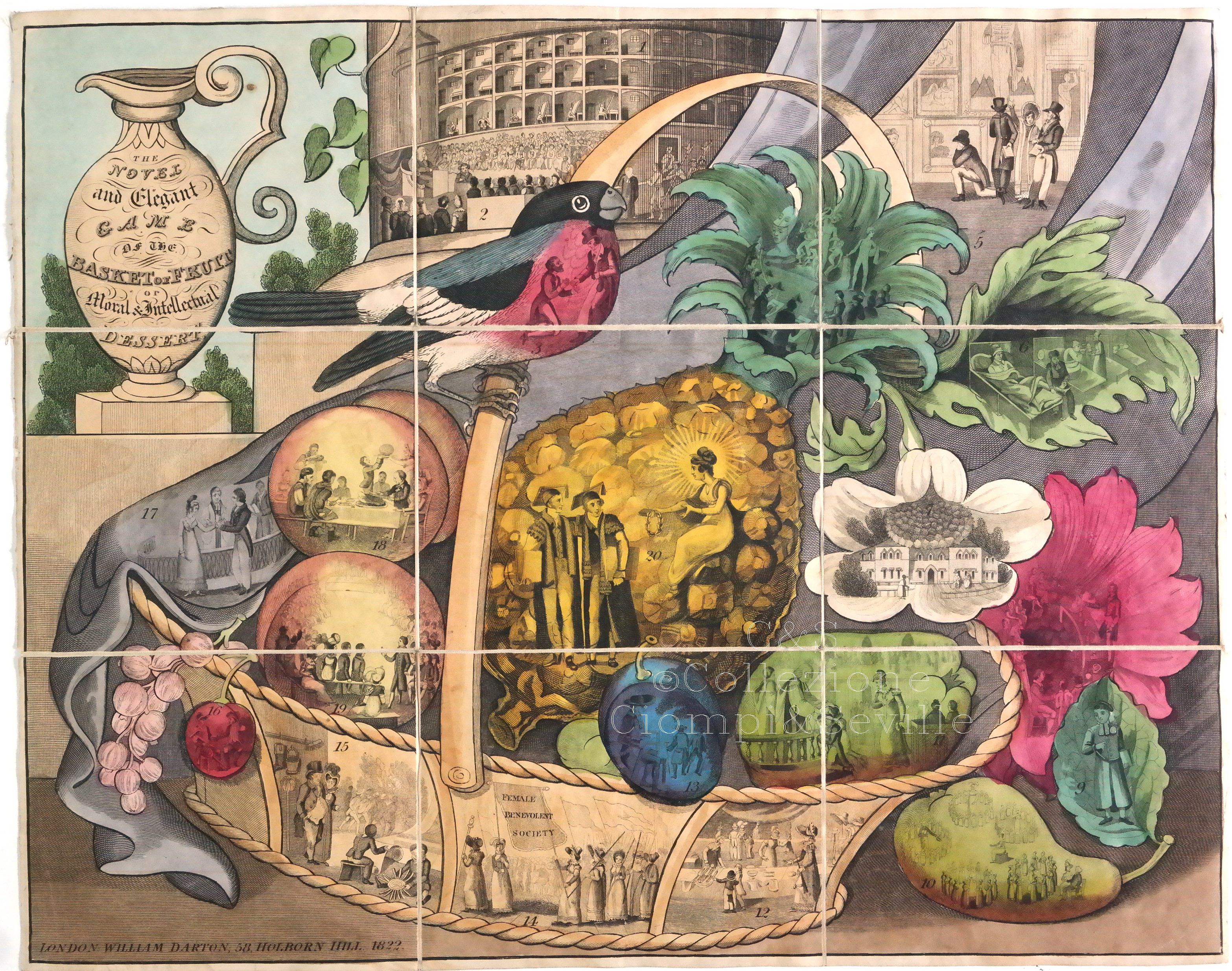 |
Versione stampabile
 |
Invia una segnalazione

|
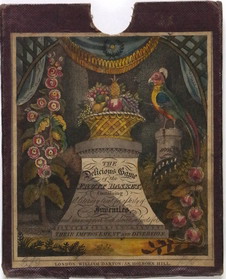 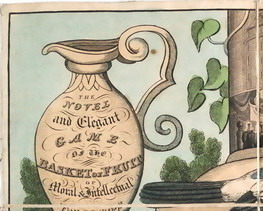 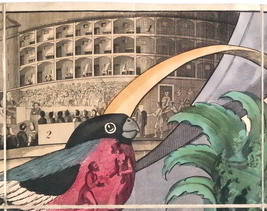 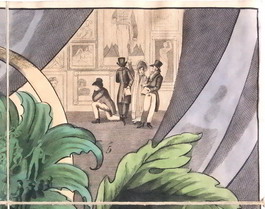 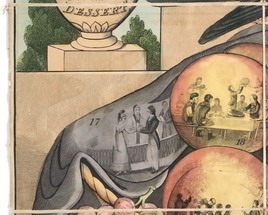 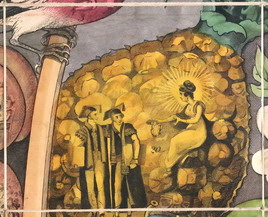 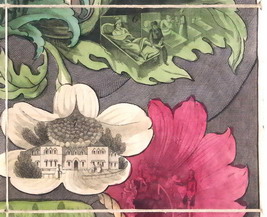 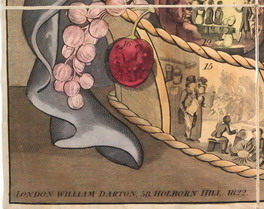 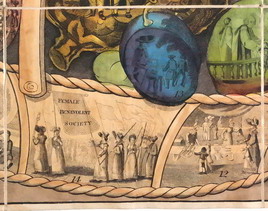 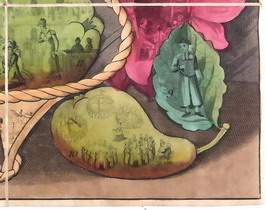 |
primo autore: | Anonimo |
| secondo autore: | Darton William | |
| anno: | 1822 | |
| luogo: |
Inghilterra-Londra |
|
| periodo: | XIX secolo (1°/4) | |
| percorso: | Percorso di 20 caselle numerate | |
| materiale: | carta incollata su tela (engraving on paper with linen backing) | |
| dimensioni: | 000X000 | |
| stampa: | Litografia colorata (hand coloured engraving) | |
| luogo acquisto: | ||
| data acquisto: | ||
| dimensioni confezione: | ||
| numero caselle: | 20 | |
| categoria: | Infanzia, educazione, pedagogia, favole e fiabe | |
| tipo di gioco: | Gioco di percorso | |
| editore: | Darton William 58 Holborn Hill | |
| stampatore: | Darton William, 58 Holborn Hill | |
| proprietario: | Collezione A. Seville | |
| autore delle foto: | A. Seville | |
| numero di catalogo: | 1386 | |
| descrizione: |
Gioco di 20 caselle. Per quanto elegante nella grafica, contiene una varietà di soggetti piuttosta caotica. Le caselle illustrano: 1. il Penitenziario; 2. Processo con Giuria; 3. Visite domiciliari ai poveri; 4. Studenti della Royal Academy; 5. Manifestazione alla Royal Academy; 6. un'Infermeria; 7. un Ospizio; 8. una Lezione di chimica; 9. uno Scolaretto in divisa; 10. una Scuola Nazionale; 11. la Cresima; 12. un Bazar; 13. dei Greenwich Pensioners; 14. la Female Benevolent Society; 15. la Scuola per Ciechi; 16. dei Chelsea Pensioners; 17. il Matrimonio; 18. la Festa della mietitura; 19. una Società Biblica; 20. la Gloria che incita uno studente di Oxford e uno di Cambridge all'Emulazione, allo Studio e alle Arti. I Darton erano quaccheri e la descrizione delle varie scene nel libretto che accompagna il gioco include riferimenti al loro credo e alla loro filosofia. Per esempio la nota sulla processione della Female Benevolent Society riflette l'avversione quacchera per le dimostrazioni pubbliche: "... siamo tentati di pensare che queste buone signore trarrebbero più vantaggio nel sedersi a conversare del bene della società piuttosto che nello sfilare per le strade con bandiere dipinte". In ogni caso non deve essere stato sicuramente uno dei giochi più divertenti con cui giocare! REGOLE: non riportate sul tavoliere (Rules). CASELLE: mute. REFERENZA 1 "The Delicious Game of the Fruit Basket". (V&A Museum). The full title of this game is 'The Delicious Game of the Fruit Basket: Containing A Literary Treat for a Party of Juveniles, and running over with Choice Subjects for their Improvement and Diversion, in Various Familiar Scenes connected with Old England'. The fanciful name and design is not reflected in the nature of the teaching which is very strict and moral, using British institutions as guidelines. It is interesting because many different categories are described, such as Trial by Jury, A Lecture in Chemistry and Female Benevolent Society. Each bears a reward or forfeit, but the main aim of the game is to encourage learning and reading, rather than to win. The rules are preceded by a caution or friendly reminder to the players not to cheat. Physical description Design: engraving, hand coloured; 9 sections mounted on linen; shows a basket of fruit, flowers and a bird together with various scenes. N°of squares: 20 Squares illustrated: all Square numbering: all Squares titled: all Subject of starting square: Penitentiary Subject of ending square: glory Place of Origin: London Date: 1822 Artist/maker: Darton, William Materials and Techniques: Hand coloured paper on linen. Dimensions: Height: 15.9 in; width: 19.6 in. Folded: 6.75in x 5.5in Object history note: The fanciful name and design is not reflected in the nature of the teaching which is very strict and moral using British institutions as guidelines. It is of interest as many diverse categories are described and the booklet very full. Each bears its own reward or forfeit, but the main aim of the game is to encourage learning and reading, rather than to win. Rules booklet printed by R. and A. Taylor, Shoe Lane, London. Historical context note Rewards: as directed Forfeits: as directed N°of Players: 2-3 or pairs Equipment required: markers, teetotum Rules: An Explanation of, or Key to "THE DELICIOUS GAME OF THE FRUIT BASKET": Containing A Literary Treat for a Party of Juveniles, and running over with choice Subjects for their Improvement and Diversion, In Various Familiar Scenes connected with Old England to Which are Prefixed the RULES OF THE GAME. DIRECTIONS. Two or three persons may amuse themselves at this agreeable Pastime; and if a double set of Counters and Pyramids be purchased, Six Persons may play at it. The Totum must be marked ONE TO EIGHT on its several faces, with a Pen and Ink, or with a Blacklead Pencil. The Game may be begun agreeably to the following RULES: I. Each player must have a Pyramid and four counters of the same colour. II. Spin for first player; the highest number to begin the game, when he or she is required to read to the Company `The Caution' on page V of this book, before the game is opened. III. Let the first player spin, and place his or her pyramid on the Game, according to the number turned up. The others, in turn, are to do the same; referring to the Explanation for a Description of the Plates. IV. At each following spin, add the number turned up to that on which the Pyramid stands; and proceed accordingly, till some one arrive at N°20, who wins the Game. V, Whoever goes beyond N°20, must go back as many as he exceeds it; and try again when his turn comes. VI. When directed to stop one or more turns, the player is to place so many counters on his number, and take one up each time, instead of spinning, till all be redeemed. VII. When the spinner reads an article which has a note, he or she must refer to the page of Notes for an explanation and read the same aloud. THE CAUTION OR FRIENDLY HINT Before in this Game we proceed, Permit me a few words to say; I will not five minutes exceed, or detain you, good folk, from your play. I trust all around me are friends, And will take what I say in good part; Should a word of my CAUTION offend, It would grieve me indeed to the heart. But I wish to put all on their guard Against certain tricks I have seen; And think not my censure too hard, When I call them both cunning and mean. I observe even those whom I love, If they like not the number they spin, Will the counter, or tee-totum move, In hope by such cheating to win. But even in trifles like these, Such conduct should never take place; Mean actions get on by degrees, Till they end in our total disgrace. Besides, though we call this a Game, We cannot but quickly discern It's only a sport as to name- In the Play, there is something to learn: Improvement with Mirth is design'd; And the least we can do for such care, While the moral sinks deep in the mind, Is to play its rules open and fair, The gambler all hate and despise; For he plays but to cheat and to gain: But we, to be better and wise; And neither to cause or feel pain. Well, now I have finish'd my Task; And should any be tempted to wrong, I have only one favour to ask, That-they pause, and reflect on my song. The stages of the game are: 1. Penitentiary 2. Trial by Jury 3. Domiciliary Visit to the Indigent 4. Students at the Royal Academy 5. Exhibition at the Royal Academy 6. An Infirmary 7. An Alms House 8. A Lecture in Chemistry 9. A Blue-Coat Boy 10. A National School 11. Cinfirmation 12. A Bazaar 13. Greenwich Pensioners 14. Female Benevolent Society 15. School for the Blind 16. Chelsea Pensioners 17. Matrimony 18. Harvest Home 19. A Bible Society 20. Glory inciting an Oxonian and a Cantab Student to Emulation, Learning and the Arts. Rules placement: in booklet Descriptive line: Hand coloured game, "The Novel and Elegant Game of the Basket of Fruit" published in England by William Darton in 1822. REFERENZA 2 WHITEHOUSE, Francis Reginald Beaman, (pag. 51): FRUIT BASKET The Delicious Game of. Containing a Literary Treat for a party of Juveniles for their Improvement and Diversion. London. William Darton, 58 Holborn Hill, 1822. An engraving size 20 ¼ in X 16 ¼ in, hand-coloured, mounted in 12 sections on linen and contained in slip-in case with coloured label on front. The game is a picture of a basket of fruit which respectively form backgrounds for the 20 places or incidents, all of which are fully described in the 72-page book of explanation (printed by R. A. Taylor, Shoe Lane, London). Among them: 2 Trial by Jury, 7 Alms House, 11 Confirmation, 12 Bazaar, 16 Chelsea Pensioners, 17 Matrimony, 20 Glory inciting an Exonian and a Cantab Student to Emulation, Learning and the Arts. |
|
| bibliografia: |
1) WHITEHAUSE, F.R.B.: "Table Games of Georgian and Victorian Days", London, Peter Garnett, 1951. 2) GOODFELLOW, Caroline: "A Collector's Guide to Games and Puzzles". Secaucus, New Jersey, Chartwell Books-London, Quintet Publishing Limited 1991. 3) GOODFELLOW, Caroline: "The Development of the English Board Game, 1770-1850", in Board Games Studies 1, 1998. 4) GOODFELLOW, Caroline: "Jeux de société. Le guide du collectionneur des jeux de société depuis le XVIIIe siècle jusqu’à nos jours", (Edizione francese) Carrousel MS, 2001. 5) SEVILLE, Adrian: "The Game of Goose: and its influence on cartographical race games" Journal of the International Map Collectors' Society, Winter 2008 N°115 2008. 6) SEVILLE, Adrian: "The geographical Jeux de l'Oie of Europe." In "Belgeo" 2008 3-4 2008. 7) GOODFELLOW, Caroline: "How We Played: Games From Childhood Past", History Press, 2012. 8) QUINN, Brian - CARTWRIGHT, William: "Geographic Board Games". Geospatial Science Research 3. School of Mathematical and Geospatial Science, RMIT University, Australia. December 2014. 9) SEVILLE, Adrian: "The Royal Game of the Goose four hundred years of printed Board Games". Catalogue of an Exhibition at the Grolier Club, February 23 - May 14, 2016. 10) LIMAN, Ellen: "Georgian and Victorian Board Games: The Liman Collection", Pointed Leaf Press, 2017. 11) NORCIA, Megan A.: "Gaming Empire in Children's British Board Games, 1836-1860". Studies in Childhood, 1700 to the Present. Routledge, 2019. 12) SEVILLE, Adrian: "L'arte dei giochi da tavolo. Oltre un secolo di storia e divertimento dalla fine del Settecento all'inizio del Novecento." Edizioni White Star, 2019. 13) PARLAK, Omer Fatih: "Seafearing through the Perspective of Historic Board Games", in DGSM, Köllen Druck+Verlag, Bonn 2020. |
|
| "The Development of the English Board Game", 1770-1850 (Caroline G. Goodfellow) | ||
| Games of Moral Improvement. "Table Games of Georgian and Victorian Days". (Francis Reginald Beaman, Whitehause) | ||
Vai alla ricerca giochi Vai all'elenco autori